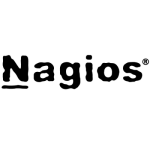What is most valuable?
The cohesiveness of the product. It's versatile and easy of use.
We're monitoring servers, network devices, storage components, load balancers, phone systems, virtual infrastructure, applications, etc. The various SDKs are great and have also allowed us to write custom probes for anything else we've needed.
How has it helped my organization?
Again, the ease of use and the administration, I'm a single UIM administrator, and I can administrate the whole product from reporting, systems monitoring, network monitoring, it's a very practical solution.
What needs improvement?
Maybe a little bit more on the reporting side. It does integrate with a product called iReport, but that's very cumbersome to use. It's a very full featured product, but something you'd have to work with every day to fullyleverage.
What do I think about the stability of the solution?
Like with any big product, it's had it's ups and downs. The last few releases have been outstanding. The stability has really come along way in the last few years.
What do I think about the scalability of the solution?
We've increased the product's footprint twice and it's rose to the challenge each time. We've integrating multiple other companies that have been acquired with this product. It's just been a fantastic solution.
How are customer service and technical support?
The tech support has been very well. Sometimes it takes a little time, if it has to go thought the back end support. For the most part, very happy with it.
Which solution did I use previously and why did I switch?
We had numerous solutions. We had SolarWinds, we had WhatsUp Gold, we had a lot of different things like that. With CA UIM, we were able to roll all those into a single monitoring platform. It's not nine different products that are configured to work together, it's one cohesive central standard product.
How was the initial setup?
We actually used a CA support to help us roll out the initial product, and it took the learning curve way down. I was able to watch and ask questions. I was really engaged in that process with them, so that when they left, and it was deployed, I was able to pick it up and I've done multiple deployments my own since then.
Which other solutions did I evaluate?
When selecting a vendor I'm looking for: support, are they going to be there if I need them, the maturity (are they mature enough that it's not going to be all over the board), and consistency.
I think I evaluated fifty different products before we went with CA UIM. It was just the out of the box functionality was there. They had probes for everything in our infrastructure. Linux, Windows, it works just as well on either. We have a heterogeneous environment. Everything was there.
What other advice do I have?
The deployment and everything went really well. The biggest feature we've seen is the ability to track availability. Availability reports, how's the product performing, not just up down like ping monitoring. We can get in there, we can pull metrics, wherever we need them, it's just very easy to use.
It is probably an 8/10, just because there's always room for improvement. A solid eight because it's always been able to do anything we've asked of it. We've done custom integrations, written custom probes, and it's always there, anything we need to do, it's fully capable.
Recommendation to peers: do your homework. Really get in there, really look, set up a sample. Again, I can not say enough the cohesiveness of the product. It's not multiple different piece meal products that have to be configured to work together, it's all one product, under the hood, and it does what it says it does.
Disclosure: PeerSpot contacted the reviewer to collect the review and to validate authenticity. The reviewer was referred by the vendor, but the review is not subject to editing or approval by the vendor.
















Very valuable inputs regarding CA Unified Infra monitor ; Thank you for sharing Ravi Suvvari